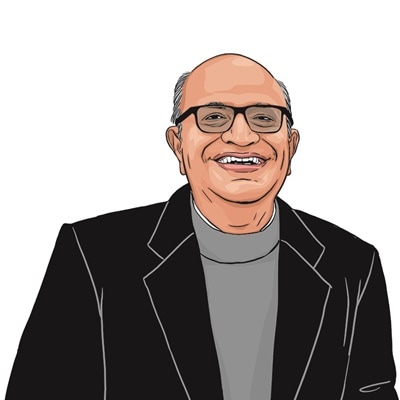Opinion Remembering K R Parthasarathy: A life in numbers
In his passing away, we have lost one of India’s finest mathematicians, scholars and teachers of the post-Independence era, whose research received high international acclaim and who inspired several generations of students
 KRP was one of the early entrants to the famous Research and Training School at the Indian Statistical Institute (ISI), Kolkata.
KRP was one of the early entrants to the famous Research and Training School at the Indian Statistical Institute (ISI), Kolkata.
One of India’s most renowned mathematicians, K R Parthasarathy, popularly known as KRP, passed away in Delhi on June 14 at the age of 87.
KRP was one of the early entrants to the famous Research and Training School at the Indian Statistical Institute (ISI), Kolkata. He went there as a graduate student in 1956 and received the institute’s first PhD degree in 1962.
At the ISI Kolkata, he came under the influence of leading statisticians, C R Rao and R R Bahadur. Along with fellow students V S Varadarajan, R Ranga Rao and S R S Varadhan, KRP initiated work in theoretical probability that soon made this group famous all over the world.
As a result, KRP was invited to spend a year at the famous Steklov Institute in Moscow, to work with the school led by Andrey Nikolaevich Kolmogorov, one of the greatest mathematicians of the 20th century, for laying the mathematical foundations of probability theory among other things. KRP had unalloyed admiration for Kolmogorov, both as a mathematician and a human being.
Varadarajan, meanwhile, was drawn to the representation theory of Lie groups and the path-breaking work being done on them by the great mathematician Harish Chandra. Parthasarathy, Ranga Rao and Varadarajan wrote a paper on this subject that became famous as the PRV paper, which inspired a lot of further research. It is remarkable that such fundamental work in pure mathematics was done at an institute devoted primarily to statistics. Rao, Varadarajan and Varadhan went on to have illustrious careers in the US, with Varadhan winning the Abel Prize in 2007.
In 1966, KRP went to the UK and held faculty positions at the universities of Sheffield and Manchester. But he returned to India, and after teaching at the University of Bombay and IIT Delhi for a few years, he joined the recently-started Delhi Centre of the ISI in 1976.
For several years, he was one of the central pillars of the institute and its best-known faculty member. In the 1980s, along with Robin Hudson of the University of Nottingham, KRP laid down the foundation of a subject that came to be known as quantum stochastic calculus or the Hudson-Parthasarathy calculus. It attracted a lot of followers and, for several years, ISI Delhi was the Mecca of the subject.
After mandatory retirement on reaching 60 in 1996, KRP continued to remain active both in teaching and research. Till the outbreak of the Covid-19 epidemic, he would regularly visit his office at ISI, where he was professor emeritus. It is a measure of his enthusiasm and dedication that at this stage of his life, he immersed himself in the newly developing subject of quantum information. He wrote several papers and lecture notes on it and taught it to several others, young and old.
Apart from his pioneering research work in diverse areas like classical and quantum probability, stochastic processes, information theory, group representations and foundations of quantum mechanics, KRP is well known for several books and lecture notes. He was a scintillating and inspiring lecturer and his talks were universally admired as models of clear exposition. He remained an enthusiastic learner and teacher till the very end of his life, writing his last paper shortly before his death.
KRP also served on several committees with dedication. To the staid proceedings of their meetings, he often brought colour with his acerbic wit and irreverence. He was a great raconteur and often regaled his students with imitations of P C Mahalanobis and a speech of Russian leader Nikita Khrushchev that he had heard during the Cuban crisis when he was a visitor to the Soviet Union.
In his passing away, we have lost one of India’s finest mathematicians, scholars and teachers of the post-Independence era, whose research received high international acclaim and who inspired several generations of students.
The writer is professor and head, department of mathematics, Ashoka University





